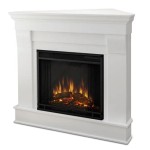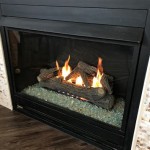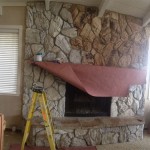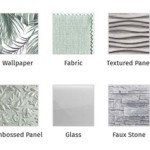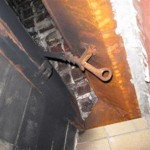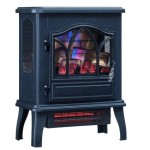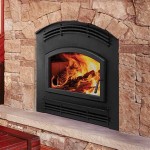Plug-In Fireplaces: A Comprehensive Guide
Plug-in fireplaces, also known as electric fireplaces, have become increasingly popular as a convenient and aesthetically pleasing alternative to traditional wood-burning or gas fireplaces. Their ease of installation, versatility, and energy efficiency make them an attractive option for a variety of living spaces. Understanding the different types, features, and considerations involved in selecting a plug-in fireplace is crucial for making an informed decision.
Plug-in fireplaces operate by simulating the appearance of a real fire using electric heating elements and visual effects, such as projected flames and glowing embers. Unlike traditional fireplaces, they do not require venting, gas lines, or complex installation processes. This makes them a suitable choice for apartments, condos, and homes where installing a conventional fireplace would be impractical or impossible. Furthermore, many plug-in fireplaces offer the flexibility of operating with or without heat, allowing homeowners to enjoy the ambiance of a fire even during warmer months.
The market offers a diverse range of plug-in fireplaces, varying in size, style, heating capacity, and features. Selecting the right fireplace requires careful consideration of individual needs and preferences, as well as an understanding of the available options.
Types of Plug-In Fireplaces
Plug-in fireplaces are available in several distinct types, each offering unique advantages and disadvantages. Understanding these differences is essential for choosing the best option for a given space and aesthetic preference.
Insert Fireplaces: These units are designed to be inserted into an existing fireplace opening, providing a simple and cost-effective way to modernize an older fireplace. Insert fireplaces typically feature realistic flame effects and adjustable heat settings. They are ideal for homeowners who want to retain the aesthetic appeal of a traditional fireplace without the hassle of burning wood or dealing with gas lines. The size of the existing fireplace opening is a critical factor when selecting an insert, as the unit must fit snugly and securely.
Wall-Mounted Fireplaces: Wall-mounted fireplaces offer a sleek and contemporary look, making them a popular choice for modern living spaces. These units are designed to be hung directly on the wall, similar to a flat-screen television. They often feature slim profiles and a variety of flame color and intensity options. Installation is generally straightforward, requiring only basic tools and hardware. The weight of the fireplace should be considered to ensure the wall can adequately support it. Furthermore, the placement of electrical outlets should be taken into account to avoid unsightly cords.
Freestanding Fireplaces: Freestanding fireplaces, also known as electric stoves, mimic the appearance of traditional wood-burning stoves. They typically feature a cast-iron or metal exterior and a realistic flame effect. Freestanding fireplaces are portable and can be easily moved from one room to another. They often include adjustable thermostat controls and safety features such as overheat protection. These units can provide a rustic or traditional aesthetic to a room and are well-suited for spaces where a more permanent fireplace installation is not desired. Their portability makes them a flexible heating solution.
Mantel Fireplaces: Mantel fireplaces combine a plug-in fireplace insert with a decorative mantel. These units provide a complete fireplace setup, offering both visual warmth and functional heating. Mantels are available in a variety of styles, from traditional to contemporary, allowing homeowners to customize the look of their fireplace to match their existing decor. Mantel fireplaces typically require more floor space than other types of plug-in fireplaces, but they offer a more substantial and traditional fireplace aesthetic. They are often the focal point of a room.
Corner Fireplaces: Designed to fit snugly into a corner, these fireplaces are ideal for maximizing space in smaller rooms. They often feature a triangular or curved shape and can provide a focal point without taking up too much floor area. Corner fireplaces are available in a variety of styles, including traditional and contemporary designs. They offer a practical solution for adding warmth and ambiance to rooms where space is limited. Careful measurement of the corner space is essential for ensuring a proper fit.
Key Features and Considerations
Beyond the type of plug-in fireplace, several key features and considerations influence the overall performance, safety, and aesthetic appeal of the unit. These factors should be carefully evaluated before making a purchase.
Heating Capacity: The heating capacity of a plug-in fireplace is typically measured in British Thermal Units (BTUs) or watts. A higher BTU or wattage rating indicates a greater heating capacity. Determine the square footage of the room where the fireplace will be used and select a unit with adequate heating capacity for that space. A general rule of thumb is that 1,500 watts can heat a room up to 400 square feet. However, factors such as insulation and ceiling height can also affect the heating requirements. Some plug-in fireplaces offer multiple heat settings, allowing users to adjust the heat output according to their needs.
Flame Effects: The realism and adjustability of the flame effects are crucial for creating a convincing and visually appealing fireplace experience. Look for models that offer a variety of flame colors, brightness levels, and speed settings. Some plug-in fireplaces use LED technology to create realistic flame effects, while others use holographic projections. The quality of the flame effects can significantly impact the overall ambiance of the room. Consider whether the unit allows for operation without heat, allowing enjoyment of the flame effect during warmer months.
Safety Features: Safety is paramount when using any electrical appliance. Plug-in fireplaces should include safety features such as overheat protection, which automatically shuts off the unit if it becomes too hot. Consider models with cool-touch exteriors to prevent accidental burns. Look for units that are certified by recognized safety organizations such as UL, ETL, or CSA. Always follow the manufacturer's instructions for proper use and maintenance. Ensure that the fireplace is plugged into a properly grounded outlet. Keep flammable materials away from the fireplace.
Remote Control: A remote control provides convenient control over the fireplace's settings, including heat, flame, and timer functions. This allows users to adjust the fireplace from the comfort of their sofa or chair. Look for models with intuitive and easy-to-use remote controls. The remote control should ideally offer a comprehensive range of settings, including temperature control, flame intensity, and a timer function for automatic shut-off. The remote should be durable and easy to handle.
Energy Efficiency: Plug-in fireplaces are generally more energy-efficient than traditional fireplaces because they only heat the room where they are located. However, energy efficiency can vary depending on the model and usage. Look for models with adjustable thermostat controls and energy-saving modes. Consider the cost of electricity in your area and estimate the annual operating cost of the fireplace based on your usage habits. Some plug-in fireplaces utilize LED lighting for the flame effects, which consumes less energy than traditional incandescent bulbs. Consider purchasing a smart plug to control the fireplace remotely and monitor its energy consumption.
Aesthetics and Design: Plug-in fireplaces are available in a wide range of styles and designs, from traditional to contemporary. Choose a model that complements your existing decor and personal taste. Consider the color, finish, and materials used in the fireplace's construction. Some models feature decorative accents such as faux logs, stones, or brick. Think about the overall aesthetic you want to create in the room and select a fireplace that enhances that vision. Pay attention to the dimensions of the fireplace and ensure that it fits comfortably in the designated space.
Installation and Maintenance
Installing a plug-in fireplace is generally a straightforward process, but proper installation and regular maintenance are essential for ensuring safe and efficient operation. Following the manufacturer's instructions is crucial.
Installation: Most plug-in fireplaces require minimal installation. For wall-mounted models, ensure that the wall is sturdy enough to support the weight of the fireplace. Use appropriate mounting hardware and follow the manufacturer's instructions carefully. For freestanding models, simply place the fireplace in the desired location and plug it into a grounded outlet. For insert fireplaces, carefully measure the existing fireplace opening and select an insert that fits snugly. Ensure that there is adequate clearance around the fireplace to prevent overheating. Avoid placing the fireplace near flammable materials.
Cleaning: Regularly clean the exterior of the fireplace with a soft, damp cloth. Avoid using harsh chemicals or abrasive cleaners, as these can damage the finish. Dust the fireplace regularly to prevent buildup. Check the air intake vents for dust and debris and clean them as needed. Some models may require periodic cleaning of the flame effect mechanism. Consult the manufacturer's instructions for specific cleaning recommendations. Unplug the fireplace before cleaning.
Maintenance: Regularly inspect the power cord and plug for damage. If the cord is damaged, discontinue use and contact a qualified electrician to replace it. Check the flame effect mechanism for any signs of wear or malfunction. Replace any worn or damaged parts as needed. Ensure that the air intake vents are clear of obstructions. Avoid overloading the electrical circuit by plugging too many appliances into the same outlet. If the fireplace is not in use, unplug it to conserve energy and prevent potential hazards. Replace the remote control batteries as needed.
Troubleshooting: If the fireplace is not working properly, consult the manufacturer's troubleshooting guide. Check the power cord and outlet to ensure that they are functioning correctly. Make sure that the thermostat is set to the desired temperature. Check the fuse or circuit breaker to see if it has tripped. If the fireplace continues to malfunction, contact a qualified electrician or the manufacturer for assistance. Never attempt to repair the fireplace yourself if you are not qualified.
By carefully considering these factors, homeowners can select a plug-in fireplace that provides warmth, ambiance, and aesthetic appeal to their living spaces.

Do Electric Fires Just Plug In Direct Fireplaces

Do Electric Fires Just Plug In Direct Fireplaces

ᑕ❶ᑐ Electric Fireplace Installation Tips And Tricks

Dimplex 23 Multi Fire Xhd Plug In Electric Firebox Insert Logs Xhd23l Fireplaces Depot

Dimplex Multi Fire Xhd 28 Inch Plug In Electric Firebox With

Hide Electric Fire Cable Plug Conceal Fireplace Cables

Dimplex Multi Fire Xhd 28 Inch Plug In Electric Firebox With

Do Electric Fires Just Plug In Direct Fireplaces

Plug In Electric Fireplaces Fireboxes Inserts Corner Fireplace Bookshelves

Dimplex 28 Multi Fire Xhd Plug In Electric Firebox Insert Logs Xhd28l Fireplaces Depot
Related Posts

